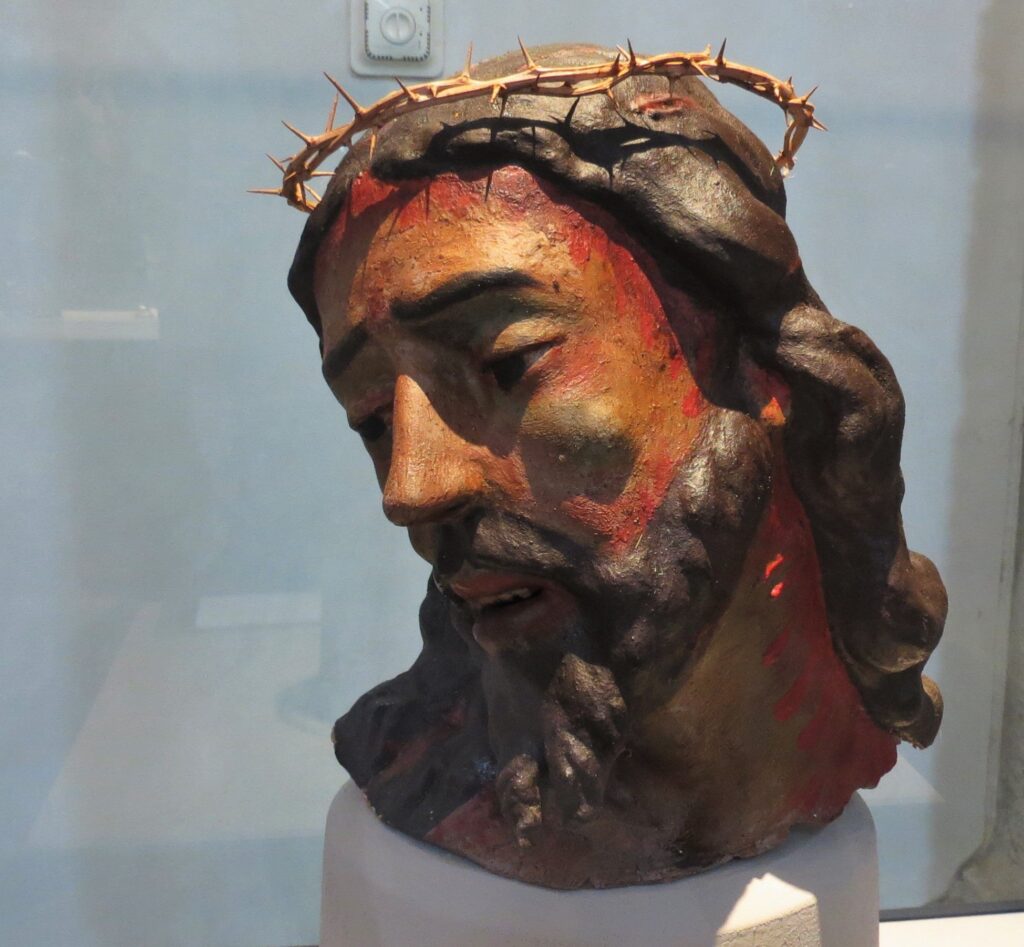
Author: Unknown southern sculptor
Dating: Second half sec. XVII – first quarter sec. XVIII
Material: Patterned and painted paper
Dimensions: cm 23x20x19
Location: Milazzo, church of San Giuseppe
The head of Christ, slightly smaller than the natural size, is enclosed in a wooden and glass case. At the present state of studies, in the absence of documentary references, we do not know how the sculpture reached the Milazzese church of San Giuseppe and for what vicissitudes its original appearance has been modified: It is evident that the figure has been resected at the base of the neck. Most probably it is one of the numerous specimens of Ecce Homo half-bust, often contained inside the case, although it cannot be completely excluded that it was a Christ with a full-length column. The theme of the Broken Christ dominates all the others in the crucial period between the end of the 17th and the beginning of the 17th century. As a result of the powerful impulse given by the Counter-Reformation, the production of sculptures depicting the Ecce Homo, the Christ tied to the column or deposed, has multiplied. In the seventeenth century, the depiction of the Passion is enriched by the search for dramatization and theatricality typical of the new taste and, also due to the influence of Spanish culture, the custom of sacred representations of Holy Week is intensified.